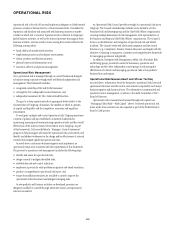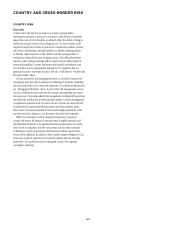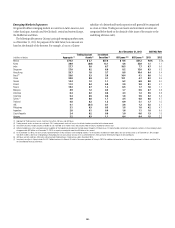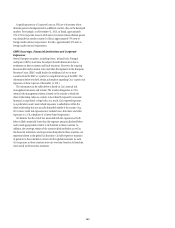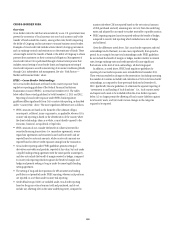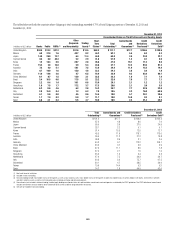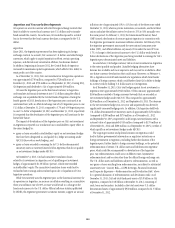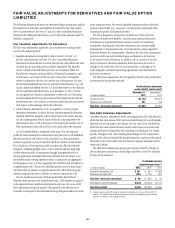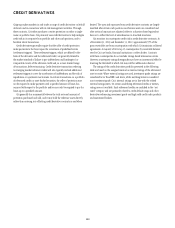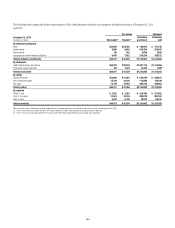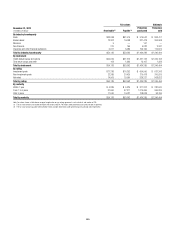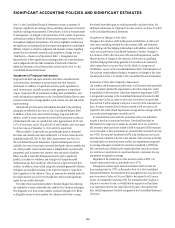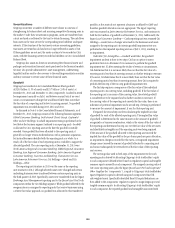Citibank 2013 Annual Report Download - page 146
Download and view the complete annual report
Please find page 146 of the 2013 Citibank annual report below. You can navigate through the pages in the report by either clicking on the pages listed below, or by using the keyword search tool below to find specific information within the annual report.128
CROSS-BORDER RISK
Overview
Cross-borderriskistheriskthatactionstakenbyanon-U.S.governmentmay
prevent the conversion of local currency into non-local currency and/or the
transfer of funds outside the country, among other risks, thereby impacting
the ability of Citigroup and its customers to transact business across borders.
Examples of cross-border risk include actions taken by foreign governments
such as exchange controls and restrictions on the remittance of funds. These
actions might restrict the transfer of funds or the ability of Citigroup to obtain
payment from customers on their contractual obligations. Management of
cross-border risk at Citi is performed through a formal review process that
includes annual setting of cross-border limits and ongoing monitoring of
cross-border exposures as well as monitoring of economic conditions globally
throughCiti’sindependentriskmanagement.Seealso“RiskFactors—
Market and Economic Risks” above.
FFIEC—Cross-Border Outstandings
Citi’s cross-border disclosures are based on the country exposure bank
regulatory reporting guidelines of the Federal Financial Institutions
Examination Council (FFIEC), as revised in December 2013. The tables
below reflect these revised guidelines for both December 31, 2013 and 2012.
Reporting of cross-border exposure under FFIEC bank regulatory
guidelines differs significantly from Citi’s country risk reporting, as described
under “Country Risk” above. The more significant differences are as follows:
• FFIECamountsarebasedonthedomicileoftheultimateobligor,
counterparty, collateral, issuer or guarantor, as applicable, whereas Citi’s
country risk reporting is based on the identification of the country where
the client relationship, taken as a whole, is most directly exposed to the
economic, financial, sociopolitical or legal risks.
• FFIEC amounts do not consider the benefit of collateral received for
securities financing transactions (i.e. repurchase agreements, reverse
repurchase agreements and securities loaned and borrowed) and are
reported based on notional amounts, while country risk amounts are
reported based on the net credit exposure arising from the transaction.
• Cross-border reporting under FFIEC guidelines permits netting of
derivatives receivables and payables, reported at fair value, but only under
a legally binding netting agreement with the same specific counterparty,
and does not include the benefit of margin received or hedges, compared
to country risk reporting which recognizes the benefit of margin and
hedges and permits netting so long as under the same legally binding
netting agreement.
• ThenettingoflongandshortpositionsforAFSsecuritiesandtrading
portfolios is not permitted under FFIEC reporting, whereas such positions
are reported on a net basis under country risk reporting.
• Creditdefaultswaps(CDS)areincludedundercross-borderreporting
based on the gross notional amount sold and purchased, and do not
includeanyoffsettingCDSonthesameunderlyingentity,comparedto
countryriskwhereCDSarereportedbasedonthenetnotionalamount
ofCDSpurchasedandsold,assumingzerorecoveryfromtheunderlying
entity and adjusted for any mark-to-market receivable or payable position.
• FFIEC reporting requires loans be reported without the benefit of hedges,
compared to country risk reporting which includes loans net of hedges
and collateral.
Given the differences noted above, Citi’s cross-border exposures and total
outstandings tend to fluctuate, in some cases, significantly, from period to
period. As an example, because total outstandings under FFIEC guidelines
do not include the benefit of margin or hedges, market volatility in interest
rates, foreign exchange rates and credit spreads will cause significant
fluctuations in the level of total outstandings, all else being equal.
In addition, as noted above, FFIEC bank regulatory guidelines for
reporting of cross-border exposures were revised effective December 2013.
These revisions resulted in changes to the presentation (including increasing
the number of countries included) and calculation of Citi’s total cross-border
outstandings, as compared to those previously disclosed at December 31,
2012.Specifically,thenewguidelines(i)eliminatetheseparatereportingof
“investments in and funding of local franchises” (i.e., local country assets)
and require such assets to be included within the cross-border exposures
below, (ii) no longer permit the offsetting of local country liabilities against
local country assets, and (iii) make various changes in the categories
required to be reported.



